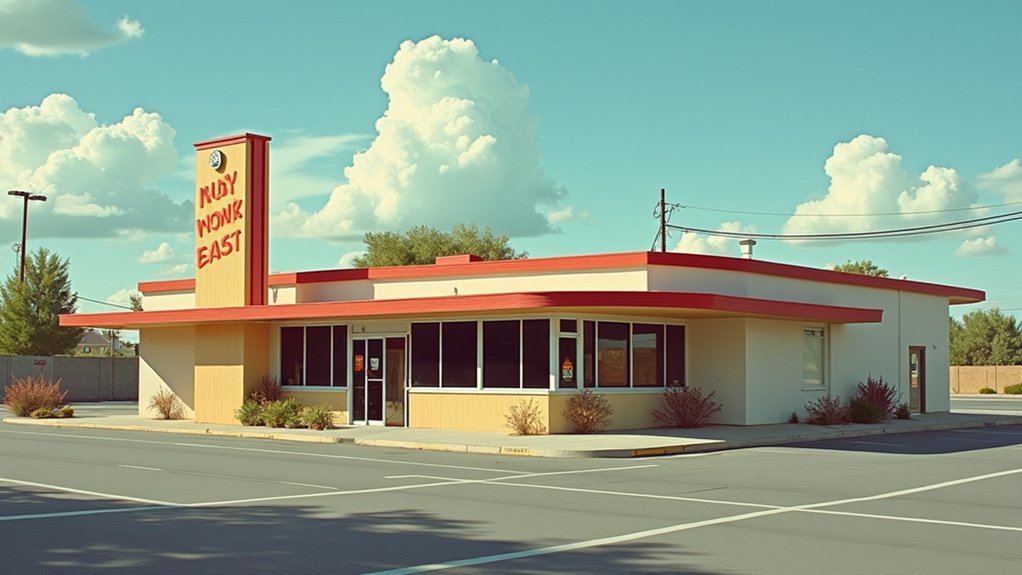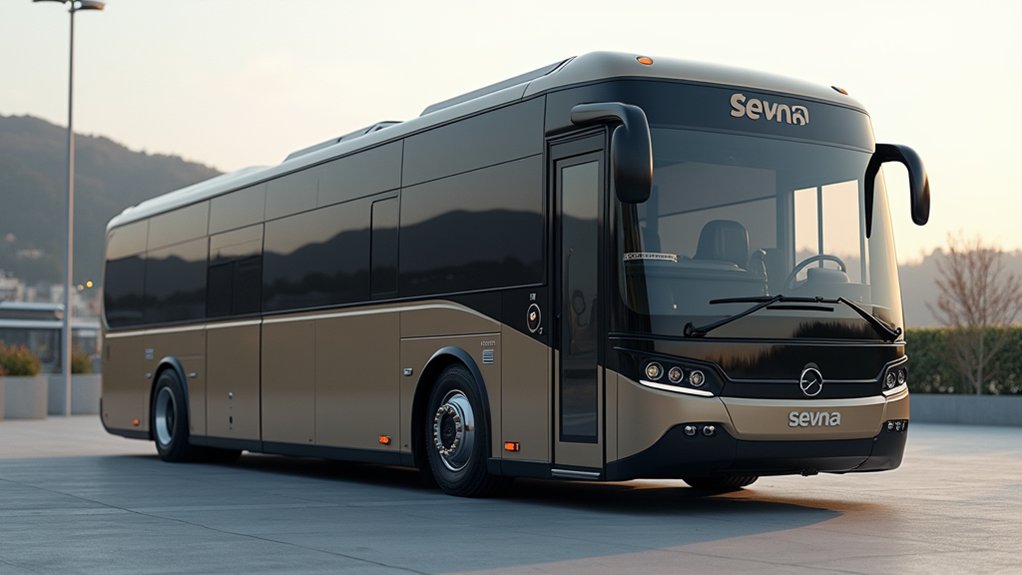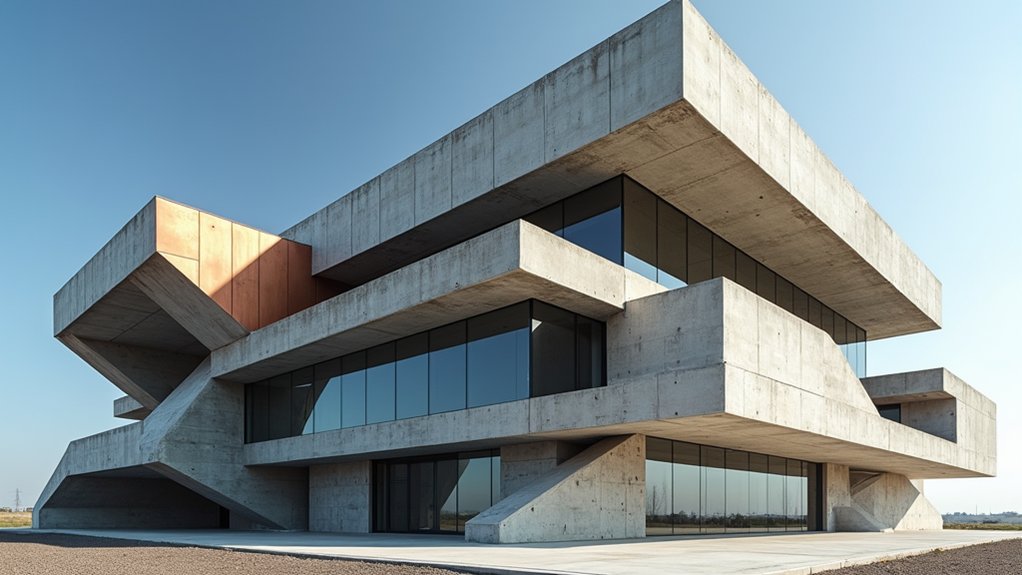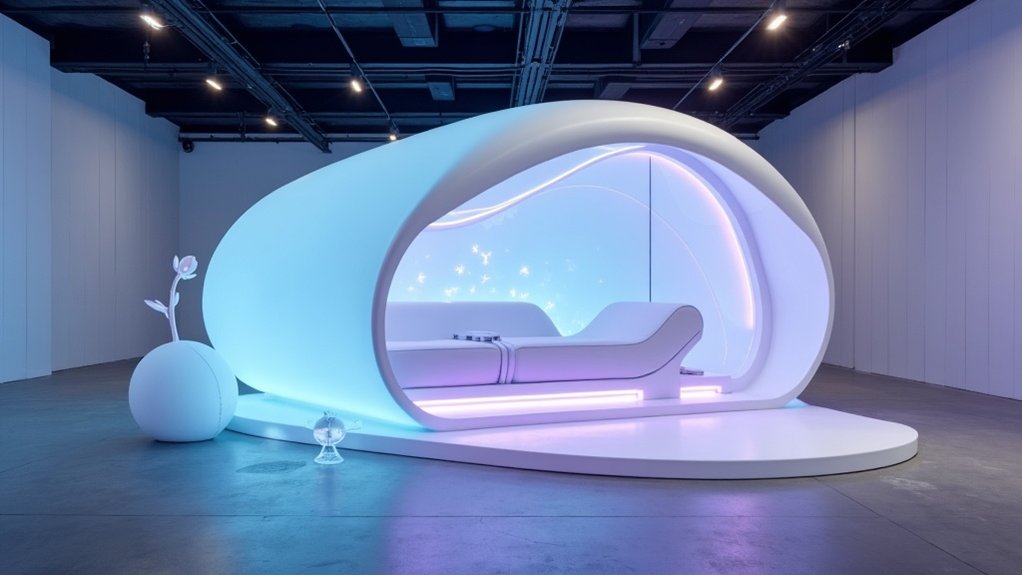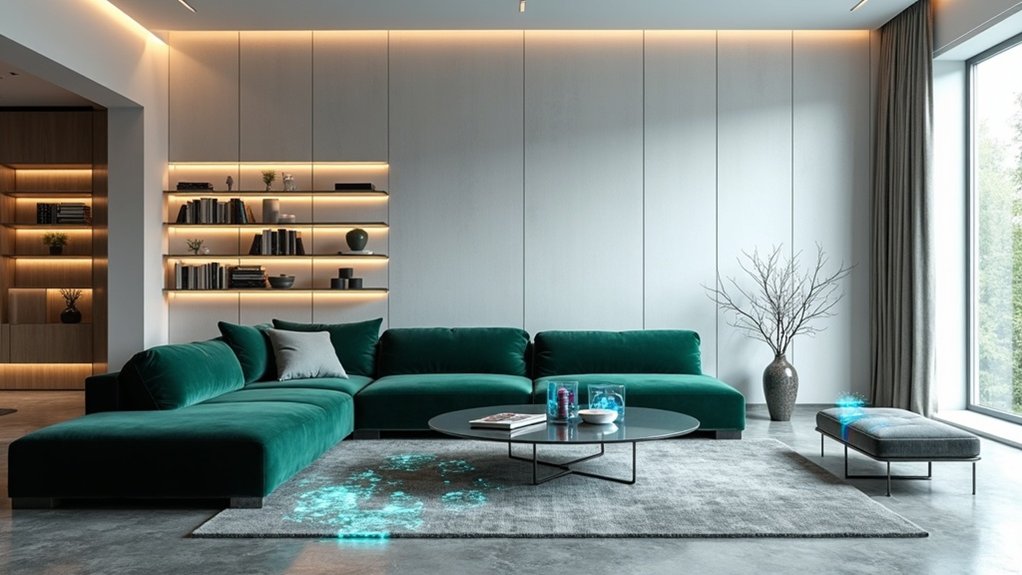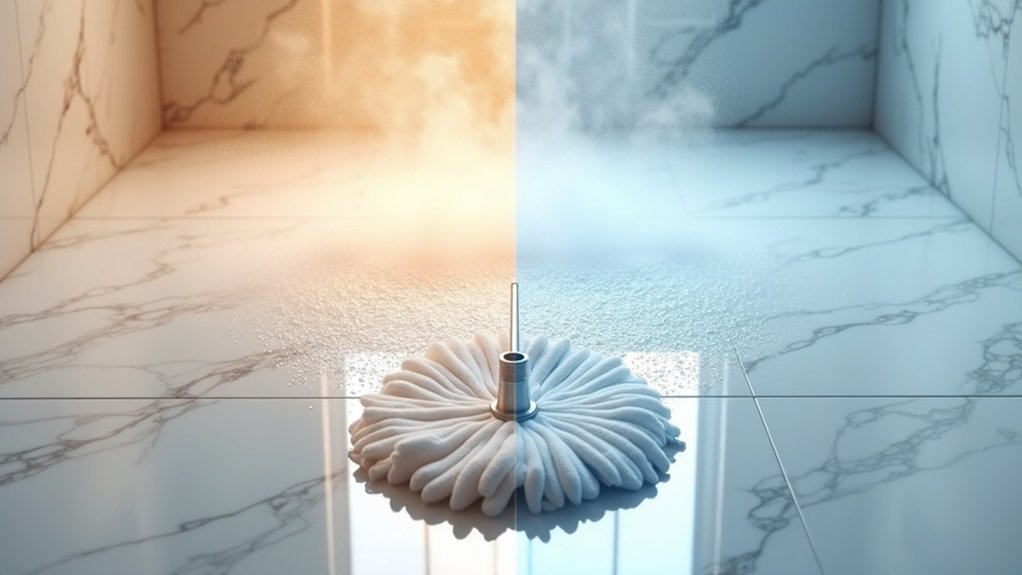A transformative wave of architectural innovation swept across America’s commercial territory in the post-war era, giving rise to Mid-Century Modern commercial design. Characterized by its emphasis on function over ornament and clean geometric lines, this architectural movement reflected the nation’s post-war optimism and rapid economic growth, particularly emerging in specialty shops, restaurants, and banks that lined main streets across the country. These buildings embodied the Bauhaus movement influence that defined the era’s architectural vision. Progressive architects and their forward-thinking clients collaborated to create structures that incorporated cutting-edge technology.
The distinctive features of these buildings, including large glass storefronts, cantilevered displays, and the harmonious blend of traditional and modern materials, represented a significant departure from previous ornate commercial structures. Architects skillfully integrated materials like aluminum, steel, and tempered glass with warm woods such as teak and rosewood, creating spaces that were both inviting and forward-looking. The use of natural materials further enhanced the aesthetic appeal and sustainability of these designs.
“The marriage of materials reflected a broader cultural synthesis between progress and accessibility,” notes architectural historian Rachel Thompson.
Mid-century design merged cutting-edge materials with familiar elements, creating spaces that balanced innovation with approachability in American commerce.
However, these iconic structures are disappearing at an alarming rate. In spite of their cultural significance as symbols of mid-20th century aspirations and community identity, many original buildings face demolition or unsympathetic renovations. The combination of economic pressures favoring new development, deteriorating original materials, and insufficient historic protection measures has accelerated their decline.
Early plastics and specialized glass components, once revolutionary, now present significant restoration challenges.
The preservation community faces multiple obstacles in protecting these architectural treasures. Commercial Mid-Century Modern buildings remain underrepresented in historic registers, partly owing to evaluation standards that weren’t designed to accommodate post-war commercial architecture. Contemporary adaptation requirements often conflict with character-defining features, while maintaining original materials and color palettes proves increasingly difficult as manufacturing processes change.
Without immediate intervention, these emblematic structures of American progress and democratic design principles risk vanishing entirely from our urban environment. Their loss would erase not just buildings, but tangible connections to a pivotal period in American architectural and cultural history.
As preservation architect Michael Chen observes, “We’re losing these buildings faster than we can document them, and with them, we’re losing irreplaceable examples of innovative American design thinking.”
